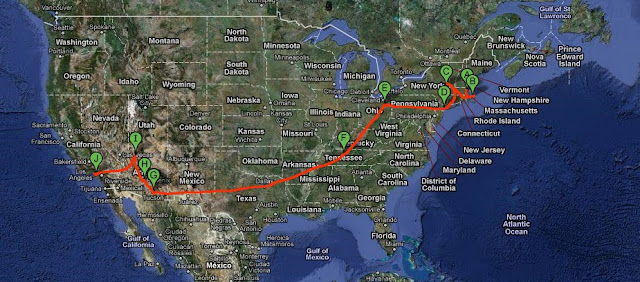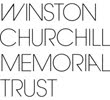Gazing down from the plane at giant irrigation projects in New Mexico, I was reminded of similar ongoing struggles to make the Saudi Arabian desert fertile. My Saudi memory was triggered again when I stepped out of the airport in Tucson and into the 40º heat of an Arizona afternoon. The desert plants, the Japanese cars, the scrap-yard for old planes and especially the dead straight roads all brought back mixed memories of the 1980s and King Abdullah’s kingdom. Most Americans I know would be horrified at the comparison, but recent Arizona legislation to hunt down, prosecute and deport illegal immigrants is a very familiar story to those workers from around the world who made their way to Saudi to earn a living and found they had to battle through and around the corrupt chicanery of the immigration system and indigenous racism.
Saudi Arabia, like everywhere else, had, and has abundant supplies of drink and drugs, and like the America of the 1930s it locks up those who are caught indulging in such degenerate moral turpitude. Rehabilitation and treatment centres are in the process of being planned in the Middle East, but the stigma and denial attached to alcohol and drug use, let alone the illegality of it, will prove an enormous hurdle in efforts to restore good health to addicts: a familiar tale worldwide.
Sierra Tucson is world famous for its bio-psycho-social-spiritual approach to pain management, addictions and mental/behavioural disorders and has been nestling in the cactus scrub beneath the Santa Catalina Mountains north of Tucson since 1983. I had particularly wanted to visit since I had read about their use of brain imaging technology in helping addicts visually perceive and understand some of the neural damage caused by substance abuse, but I was also attracted by my impressions of it being a ‘Rolls-Royce Rehab’.
 My trepidation was partially replaced by ego titillating amusement when I entered the reception building to find a welcome board with my name and profession on it; a feeling that dimmed a bit over the 15 minutes I had to sit and wait for my host to come and introduce herself. When she arrived I signed a confidentiality agreement to keep to myself all that I heard and saw at ST, and I received a written schedule that included sitting in on a Chemical Dependency group from 9.30 to 11.30, having lunch from 11.40 to 12.15 with the equine therapists (one of whom was the brilliantly named Kermit Firestone, a wrangler and horse expert who looked like a 1950s tanned, handsome cowboy actor… a rugged Ronald Reagan perhaps). And from 12.15 to 13.00 hours I would get a tour of ST. This package, because that is what it felt like, was delivered efficiently without much warmth except for in the chemical dependency group where six young addicts were coming to terms with their problems and sharing their experiences and feelings amongst themselves and with the facilitator and me. It turned out to be the most human bit of the day and interesting for me to hear the similarities and differences with their British counterparts.
My trepidation was partially replaced by ego titillating amusement when I entered the reception building to find a welcome board with my name and profession on it; a feeling that dimmed a bit over the 15 minutes I had to sit and wait for my host to come and introduce herself. When she arrived I signed a confidentiality agreement to keep to myself all that I heard and saw at ST, and I received a written schedule that included sitting in on a Chemical Dependency group from 9.30 to 11.30, having lunch from 11.40 to 12.15 with the equine therapists (one of whom was the brilliantly named Kermit Firestone, a wrangler and horse expert who looked like a 1950s tanned, handsome cowboy actor… a rugged Ronald Reagan perhaps). And from 12.15 to 13.00 hours I would get a tour of ST. This package, because that is what it felt like, was delivered efficiently without much warmth except for in the chemical dependency group where six young addicts were coming to terms with their problems and sharing their experiences and feelings amongst themselves and with the facilitator and me. It turned out to be the most human bit of the day and interesting for me to hear the similarities and differences with their British counterparts.Lunch was brisk. Too brisk for me to do justice to the dietician-designed buffet of beans, rices, pulses, proteins and greens that were enticingly spread out. Good nutrition is an essential starting point for chemical dependency recovery and there was plenty of it available here in the glorious wooden dining area with its picture windows looking out across the valley. Unfortunately my appetite was side-lined by my interest in the equine and group therapists’ conversation which followed my enquiries as to how management and therapists work together at ST, and how much of the profits were taken by shareholders and how much ploughed back into provision of core services to clients. I found myself a bit embarrassed by the openness of their quite hostile views on management and profit taking, and how as therapists they felt dispensible and under-valued. These weren’t the views I expected to hear as a visitor; and if I was hearing them, I wonder what goes on behind closed doors?
Whether it is a sign of the economic times, or some other factors, Sierra Tucson was operating with a roll-call of 73 patients on the day I visited; meaning that they had 79 empty beds. Not much profit to be had on figures like those.
In retrospect, it was a crazily optimistic venture of mine to hope to get anything more than the faintest understanding of what ST is about in a day, and in the end I only got a 3-hour ration and a big bundle of glosssy literature to take away with me. I wonder how different the feelings are for patients who leave after their 30 days?
The overall atmosphere was more hospital/clinic than rehab, and there was a brusque efficiency about all that I saw outside of the group therapy session. One thing that delighted, surprised and reminded me of hospitals was the bookshop that opened up at lunchtime. Here you could buy addiction and other mental and physical health literature, stationary and toiletries… but no postcards or chocolate unfortunately!
There is no denying or deriding Sierra Tucson’s place at the top of the treatment league as they deliver a certain kind of first-rate service to those with the money to pay. Not only is this delivery very professional, but their research and commitment to new technologies (as evidenced at the centre and in some of their bio/psycho literature and on the web) is something we can all learn from. Their facilities include a detox unit, a swimming pool, a labyrinth, an adventure playground and all manner of therapies and therapists situated in a magnificent and very private location; but as one of the young men in the therapy group said to me: ‘I’m looking forward to going to Prescott (another treatment centre) because 30 days isn’t enough for me.’
The understanding that time is the most vital component in successful recovery is perhaps the greatest gift that he takes away from Sierra Tucson.


















